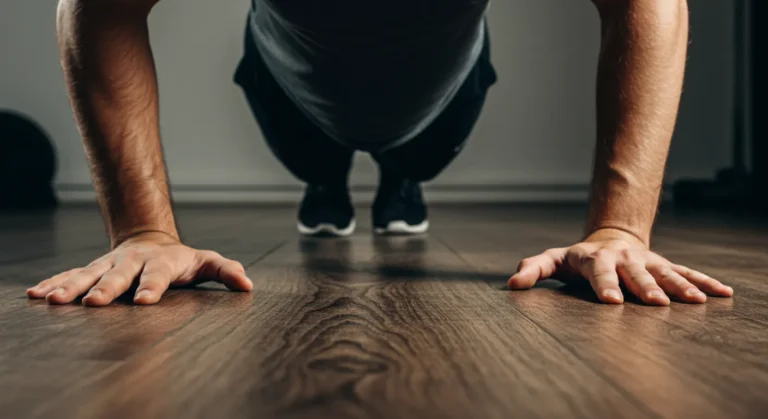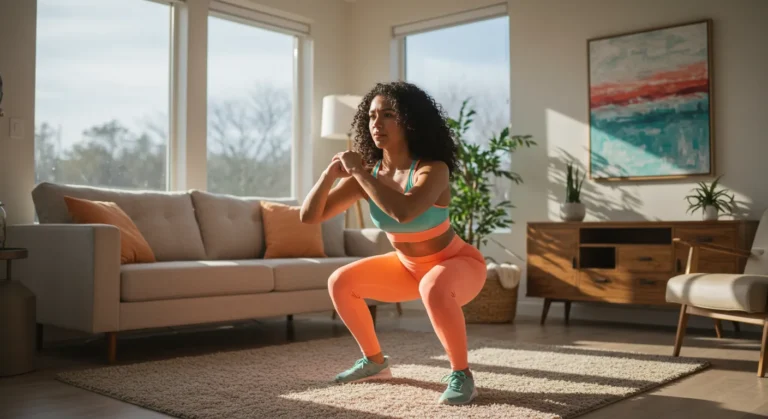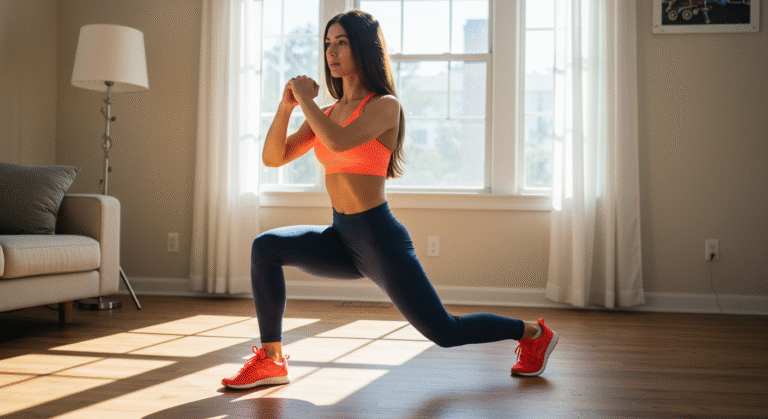Daily Exercise Routine: Simple Habits for Lifelong Health

Last Tuesday, I watched my neighbor sprint to catch the bus and arrive completely winded.
Three months later, after starting what she calls her “stupidly simple” daily exercise routine, she walked past the same bus stop with a spring in her step, choosing to walk the extra few blocks instead.
It is a matter of continuous movement – it does not only change your body, it changes the entire relationship to physical activity.
If you read it, there is a possibility that you have tried all the approaches to fitness before. Maybe you have signed up for intensive training programs, purchased devices that are now collecting dust or feeling guilty of leaving the gym for the third week. I understood.
The training industry likes to complicate things, but what I have learned here: Sustainable health is not about the right workouts or dramatic changes. It is about to show continuously, even when – especially when – you do not feel that way.
A daily training routine does not mean sweating through hour-long sessions or pushing yourself to fatigue.
Why Daily Movement Changes Everything (And It’s Not What You Think)
Most people start exercising because they want to lose weight or look different. Those are valid goals, but they’re just the tip of the iceberg.
What happens when you commit to regular physical activity goes so much deeper than appearance—it literally rewires your brain and body for better living.
The mental health benefits alone are remarkable. Regular exercise acts like a natural antidepressant, releasing endorphins and other feel-good chemicals that can dramatically improve your mood and reduce anxiety.
I’ve seen people completely transform their outlook on life simply by taking a 20-minute walk each morning.
The research backs this up too—studies consistently show that people who maintain daily exercise routines report better mental clarity, less stress, and improved emotional resilience.
But here’s what really gets me excited: exercise makes your brain work better. Not just during workouts, but throughout your entire day. Regular physical activity increases blood flow to the brain, promotes the growth of new neural connections, and can actually improve memory and concentration.
If you’ve ever noticed that your best ideas come during or after a walk, that’s not coincidence—that’s biology.
Your cardiovascular system becomes more efficient with consistent movement. Your heart gets stronger, your circulation improves, and activities that used to leave you breathless become effortless. This isn’t just about athletic performance—it’s about having the energy to live fully.
And let’s talk about something that becomes more important as we age: bone and joint health. Weight-bearing exercises and movement patterns help maintain bone density and joint flexibility.
This means fewer aches, better balance, and maintaining independence as you get older. That’s functional fitness at its most practical.
Building Your Personal Movement Blueprint
The secret to a sustainable daily exercise routine isn’t finding the “perfect” workout—it’s creating a system that works with your schedule, preferences, and energy levels. Here’s how to build something that actually sticks:
Start Ridiculously Small
I’m talking embarrassingly small. If you’re completely sedentary, start with five minutes of movement per day. Not 30 minutes, not an hour—five minutes. Maybe it’s walking around your house, doing some gentle stretches, or dancing to two songs.
The goal isn’t to transform your fitness overnight; it’s to build the neural pathway of daily movement.
Once five minutes feels automatic (usually 1-2 weeks), bump it to 10 minutes. Then 15. This gradual approach prevents the overwhelm and burnout that kills most exercise routines before they even begin.
Create Your Movement Menu
Variety keeps things interesting and prevents overuse injuries. Think of building a personal menu of activities you can choose from based on your mood, energy level, and available time:
For Energy and Cardiovascular Health:
- Brisk walking (indoor or outdoor)
- Dancing to your favorite playlist
- Jumping jacks or simple cardio sequences
- Quick hiit workout sessions when you’re feeling energetic
For Strength and Functional Movement:
- Bodyweight exercises like squats, push-ups, and lunges
- Resistance band workouts
- Beginner strength training at home with basic equipment
- Functional training movements that mimic daily activities
For Flexibility and Mental Wellness:
- Morning stretches to start your day
- Yoga sequences for flexibility and strength
- Evening mobility routine to unwind
- Back stretches for flexibility if you spend long hours sitting
For Recovery and Gentle Movement:
- Leisurely walks in nature
- Gentle yoga or restorative poses
- Light stretching while watching TV
- Simple mobility exercises for joint health
Anchor Your Routine to Existing Habits
This is where most people go wrong—they try to add exercise to their day without connecting it to something they already do consistently. Instead, attach your movement to an established habit:
- Exercise right after your morning coffee
- Take a walk immediately after lunch
- Do stretches while watching the evening news
- Perform a few strength exercises before your shower
This habit stacking makes your exercise routine feel less like an additional burden and more like a natural extension of your day.
Listen to Your Body’s Wisdom
Some days you’ll feel energetic and ready for a challenging workout. Other days, you’ll feel tired or stressed, and gentle movement is more appropriate. Both are valuable.
The key is maintaining the consistency of daily movement while allowing flexibility in intensity and type.
This might mean doing a full body workout on Monday, a gentle walk on Tuesday when you’re stressed, some yoga on Wednesday, and bodyweight exercises on Thursday. The variety keeps you engaged while honoring what your body needs.
Making It Sustainable: Tools and Strategies That Actually Work
Technology can be helpful, but don’t let it overcomplicate things. A simple fitness app or wearable device can help track progress and provide motivation, but the best exercise routine is the one you’ll do consistently, regardless of whether you’re tracking every step.
Consider your environment. If you’re exercising at home, make sure you have adequate space and any basic equipment you might need—resistance bands, a yoga mat, or some adjustable weights. But remember, you can build significant strength and fitness using just your bodyweight.
Find your support system. This might be a workout buddy, an online community, or simply sharing your goals with family members. Having some form of accountability dramatically increases your chances of sticking with your routine.
Plan for obstacles. Bad weather, busy schedules, low motivation—these are part of life, not excuses to quit. Have backup plans: indoor alternatives for outdoor activities, shorter routines for busy days, and gentle options for low-energy moments.
The Compound Effect of Consistency
Here’s something that took me years to understand: the magic isn’t in any single workout—it’s in the compound effect of showing up day after day.
After a few weeks of consistent movement, you start sleeping better. After a month, daily activities become easier. After three months, you begin to crave physical activity rather than avoiding it.
Your exercise routine becomes less about forcing yourself to work out and more about honoring a commitment to yourself. It becomes part of your identity rather than something you have to do.
The anti-aging benefits become apparent over time too. Regular exercisers typically maintain better cognitive function, stronger bones, more muscle mass, and greater independence as they age. This isn’t about vanity—it’s about quality of life.
Starting Where You Are, Not Where You Think You Should Be
Maybe you used to be more active. Maybe you’ve never had a consistent exercise routine. Maybe you’re dealing with physical limitations or time constraints. None of that matters for starting. What matters is taking the first step from wherever you are right now.
Your daily exercise routine doesn’t need to impress anyone or meet arbitrary standards. It needs to serve your life, improve your health, and bring you some measure of joy or satisfaction.
Whether that’s a 10-minute morning stretch routine, a 30-minute walk after dinner, or a mix of strength and flexibility exercises throughout the week, the best routine is the one you’ll actually maintain.
The transformation happens not in dramatic bursts but in quiet, consistent moments of choosing movement over stillness, progress over perfection, and self-care over self-neglect. Your future self is counting on the choices you make today.
Start simple, stay consistent, and trust the process. Your body and mind will thank you for years to come.
Want more practical wellness tips? Explore our other articles for guidance on nutrition, mental health, and holistic living.
Disclaimer: The information provided is for educational purposes only, not a substitute for professional medical advice. Always consult a healthcare professional.







